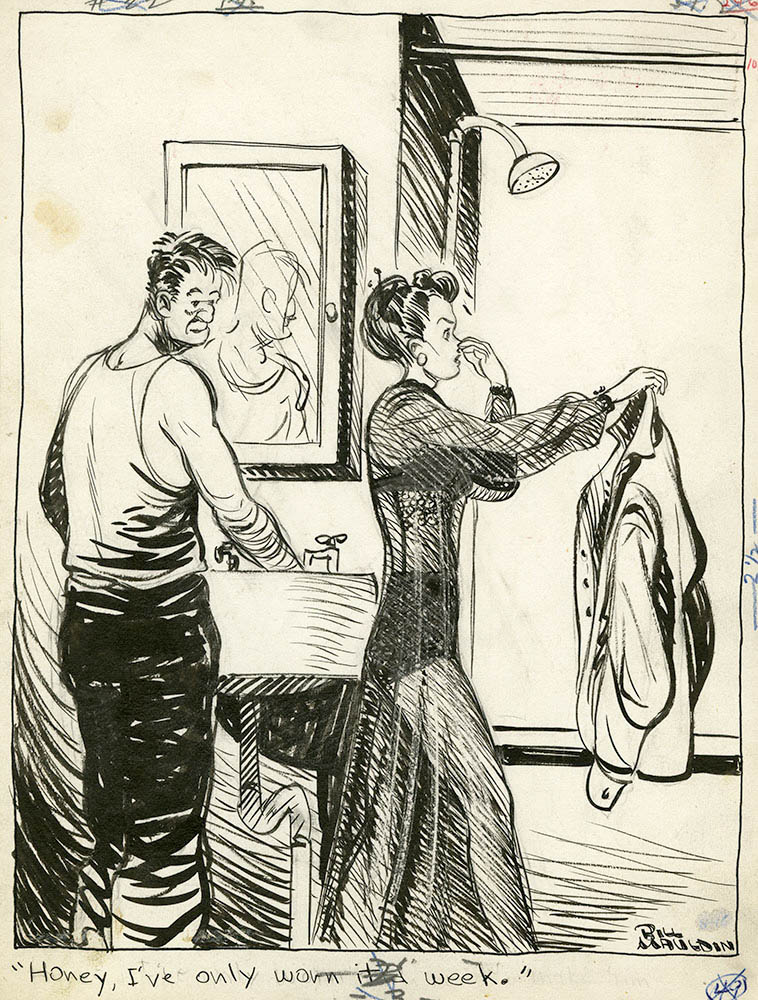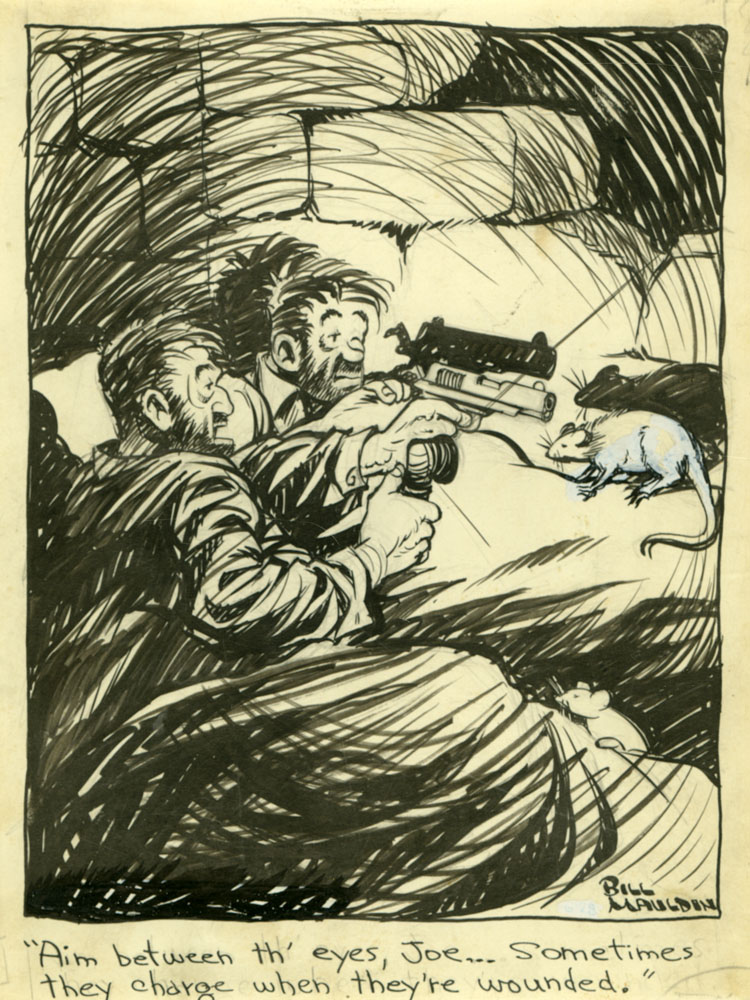Curating Mauldin: Selecting Cartoons for Drawn to Combat
 When speaking with the media, visitors, or staff members about the PMML’s latest exhibit, Drawn to Combat: Bill Mauldin and the Art of War, I’m often asked how I chose the materials in the exhibit. As the PMML’s Curator it is my job to develop our exhibits from start to finish, in this case pulling items from our extensive Bill Mauldin Collection. In the end, I chose about 200 items out of more than 5,000 original drawings, hundreds of photographs and letters, dozens of artifacts, and various printed materials from Bill Mauldin’s extensive career.
When speaking with the media, visitors, or staff members about the PMML’s latest exhibit, Drawn to Combat: Bill Mauldin and the Art of War, I’m often asked how I chose the materials in the exhibit. As the PMML’s Curator it is my job to develop our exhibits from start to finish, in this case pulling items from our extensive Bill Mauldin Collection. In the end, I chose about 200 items out of more than 5,000 original drawings, hundreds of photographs and letters, dozens of artifacts, and various printed materials from Bill Mauldin’s extensive career.
The first step in creating the exhibit was research. Before I ever looked through the collection I had to learn about Bill Mauldin and how his work connected to the PMML’s mission of addressing the role of the citizen soldier. This included reading writings about Mauldin, by Mauldin, and about the experiences that he depicted in his cartoons. After gaining a greater understanding of Bill Mauldin, the next step was to go through the collection at the museum. For the past several years, the PMML staff and interns have cataloged and digitized Mauldin’s cartoons to make them searchable and viewable via an online database. I used this database to sort through the materials and to visualize the range of themes, topics, and events addressed throughout his works. I was able to narrow down the focus of the exhibit by grouping his cartoons by theme or subject matter, from which I was able to determine the materials that best represented Mauldin’s lifelong devotion to addressing military topics, as well as his relentless social and political commentary.
In creating the exhibit, I also knew that there would be questions as to why not every piece in the exhibit is from World War II or explicitly military in nature. While I wanted to ensure that we included as many items from WWII, Korea, Vietnam, and various foreign wars that Mauldin covered, we also believed it was important to highlight how Mauldin continued to address military affairs when he transitioned from soldier back to citizen. His political cartoons from his later years underscore his experiences during the war, and how he felt called upon to speak out to the truths he saw that not only led to war, but how wars were managed and executed by those at the highest levels. These political cartoons speak to the heart of what Mauldin had always been focused on – holding those in power accountable, while illustrating the realities experienced by the American people, civilian and soldier alike.
 So how did the 200 items that the exhibit is comprised of make the cut? Ultimately the works included in the exhibit represent the most important themes and events illustrated by Bill Mauldin over the course of his career. When addressing war and life in the military, these works reflect themes Mauldin not only experienced, but understood to be at the center of the citizen soldier experience. From the perspective of politics and social commentary, the works presented are representative of his unflinching desire to illuminate what he believed were the most important issues faced by Americans at the time.
So how did the 200 items that the exhibit is comprised of make the cut? Ultimately the works included in the exhibit represent the most important themes and events illustrated by Bill Mauldin over the course of his career. When addressing war and life in the military, these works reflect themes Mauldin not only experienced, but understood to be at the center of the citizen soldier experience. From the perspective of politics and social commentary, the works presented are representative of his unflinching desire to illuminate what he believed were the most important issues faced by Americans at the time.
The cartoons and artifacts that you see in the exhibit today were all selected because they are not only some of his best works, but because they tell the story of Mauldin’s long cartooning career. From his earliest pieces—created while a student in Chicago—to his wartime and political cartoons, the items that have been selected shape the narrative of what Bill Mauldin stood for.